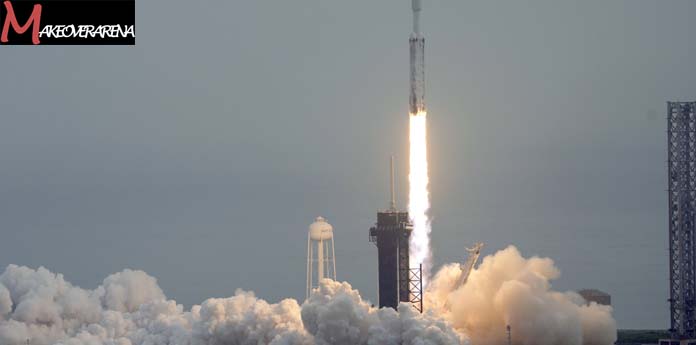NASA initiated a mission to an unusual asteroid encased in metal. This asteroid is located at a distance of two billion miles and requires six years to reach from Earth. Scientists aim to investigate the Psyche asteroid with the expectation of gaining insights into the origins of Earth and the factors that support its habitability.

NASA Launches Psyche Mission to Rare Metal Asteroid
Lindy Elkins-Tanton, the chief scientist from Arizona State University, expressed, “For a long time, humans have dreamt of reaching the Earth’s metallic core. Just ask Jules Verne.”
“The pressure is too high. The temperature is too high. The technology is impossible. But there’s one way in our solar system that we can look at a metal core and that is by going to this asteroid.”
Potato Shaped Rock is 150 Miles Wide
Most asteroids are typically composed of rock or ice. However, Psyche, a potato-shaped metallic asteroid measuring 150 miles wide, provides a unique opportunity as it is the first metal-based asteroid to be studied. The scientific team is also aiming to capture the very first images of this celestial object.
Psyche, which could be the fragmented remnants of a planetesimal or a fundamental building block of a rocky planet, holds the distinction of being the largest among the nine known metal-rich asteroids, according to NASA.
This potato-shaped space rock spans approximately 144 miles by 173 miles (232 kilometers by 280 kilometers) at its widest point and boasts a mass of around 440 billion pounds. It significantly surpasses the van-sized spacecraft in size, equipped with solar panels extensive enough to cover a tennis court.
The spacecraft, also bearing the name Psyche, was sent into space aboard a SpaceX Falcon Heavy rocket from NASA’s Kennedy Space Centre in Florida last Friday.
NASA posits that the asteroid, situated in orbit between Mars and Jupiter, is abundant in iron, nickel, and various other metals, and it may even contain silicates. Its rather unremarkable dull grey appearance is likely due to a surface covered in fine metal particles resulting from cosmic collisions.
Metal Cliffs And Lava Flows
Discovered back in 1852, this celestial body was given the moniker Psyche, borrowing its name from the captivating goddess of the soul in Greek mythology.
When pondering what they might encounter, scientists envision the possibility of encountering jagged craters, imposing metallic cliffs, and weathered lava flows encrusted with metals that might display a greenish-yellow hue due to sulfur. However, Ms. Elkins-Tanton conceded that these expectations are “highly likely to be completely inaccurate.”
She also mentioned the potential presence of trace amounts of gold, silver, platinum, or iridium – elements that have an affinity for iron – possibly dissolved within the asteroid’s iron and nickel composition. Ms. Elkins-Tanton emphasized, “There’s a significant probability that it will surpass our wildest imaginations, and that is what I ardently hope for.”
Regarded as a building block from the formation of our solar system some 4.5 billion years ago, this asteroid has the potential to provide answers to pivotal questions, including the origins of life on Earth and the factors that make our planet habitable, as per Ms. Elkins-Tanton.
Check These Out
- NASA plans to launch a New Technology to Help Prevent Future Asteroids From Hitting the Earth
- Best Apple Arcade Games – Best Arcade Games to Play on iOS Devices
- NASA Is Set To Launch NASA Plus Streaming Service
- FREE FACEBOOK DATING APP – HOW DOES THE FACEBOOK DATING APP WORKS?
- Nintendo Switch Online Adds a Mission and Reward System



